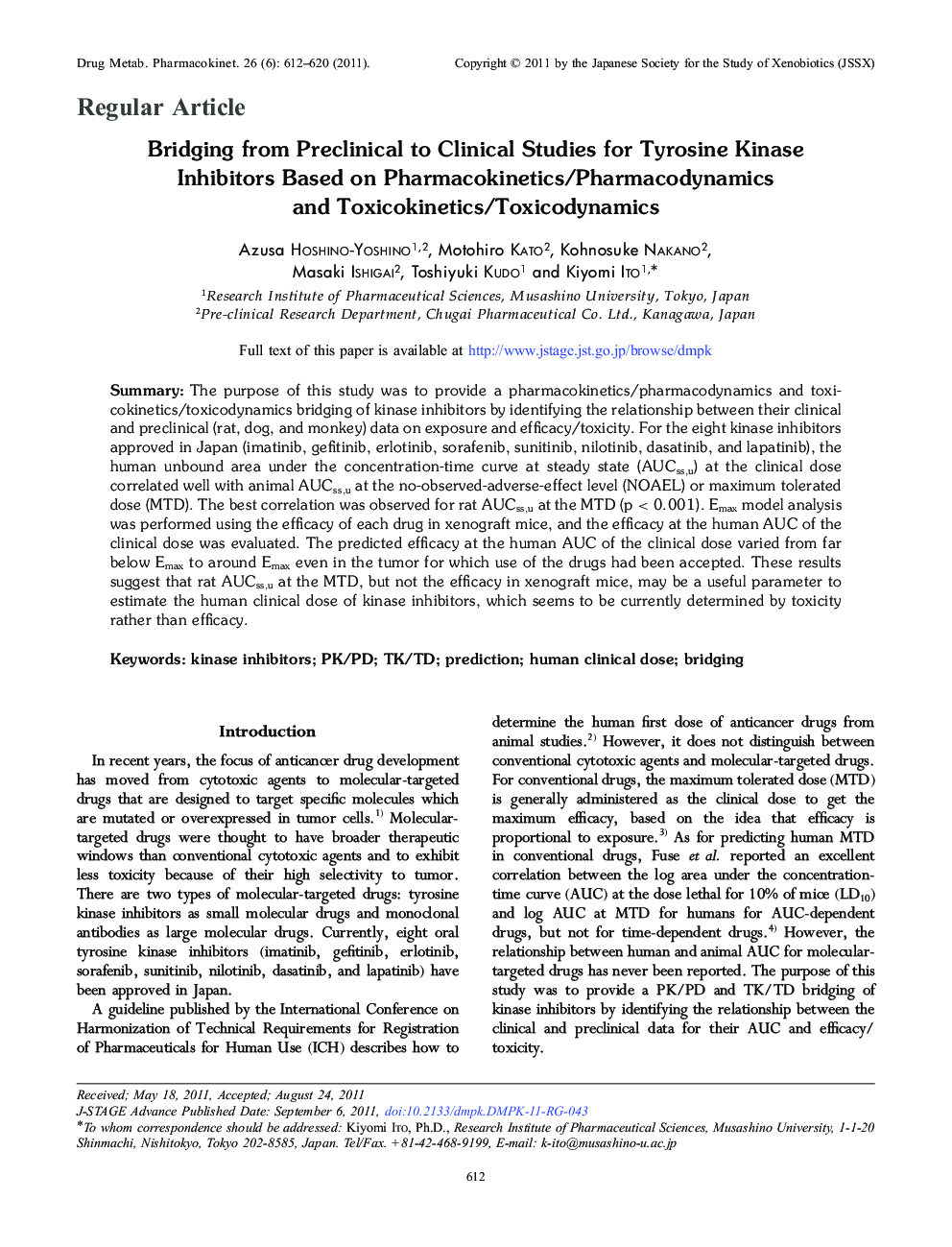| کد مقاله | کد نشریه | سال انتشار | مقاله انگلیسی | نسخه تمام متن |
|---|---|---|---|---|
| 2479280 | 1113435 | 2011 | 9 صفحه PDF | دانلود رایگان |

Summary:The purpose of this study was to provide a pharmacokinetics/pharmacodynamics and toxicokinetics/toxicodynamics bridging of kinase inhibitors by identifying the relationship between their clinical and preclinical (rat, dog, and monkey) data on exposure and efficacy/toxicity. For the eight kinase inhibitors approved in Japan (imatinib, gefitinib, erlotinib, sorafenib, sunitinib, nilotinib, dasatinib, and lapatinib), the human unbound area under the concentration-time curve at steady state (AUCss,u) at the clinical dose correlated well with animal AUCss,u at the no-observed-adverse-effect level (NOAEL) or maximum tolerated dose (MTD). The best correlation was observed for rat AUCss,u at the MTD (p < 0.001). Emax model analysis was performed using the efficacy of each drug in xenograft mice, and the efficacy at the human AUC of the clinical dose was evaluated. The predicted efficacy at the human AUC of the clinical dose varied from far below Emax to around Emax even in the tumor for which use of the drugs had been accepted. These results suggest that rat AUCss,u at the MTD, but not the efficacy in xenograft mice, may be a useful parameter to estimate the human clinical dose of kinase inhibitors, which seems to be currently determined by toxicity rather than efficacy.
Journal: Drug Metabolism and Pharmacokinetics - Volume 26, Issue 6, 2011, Pages 612-620